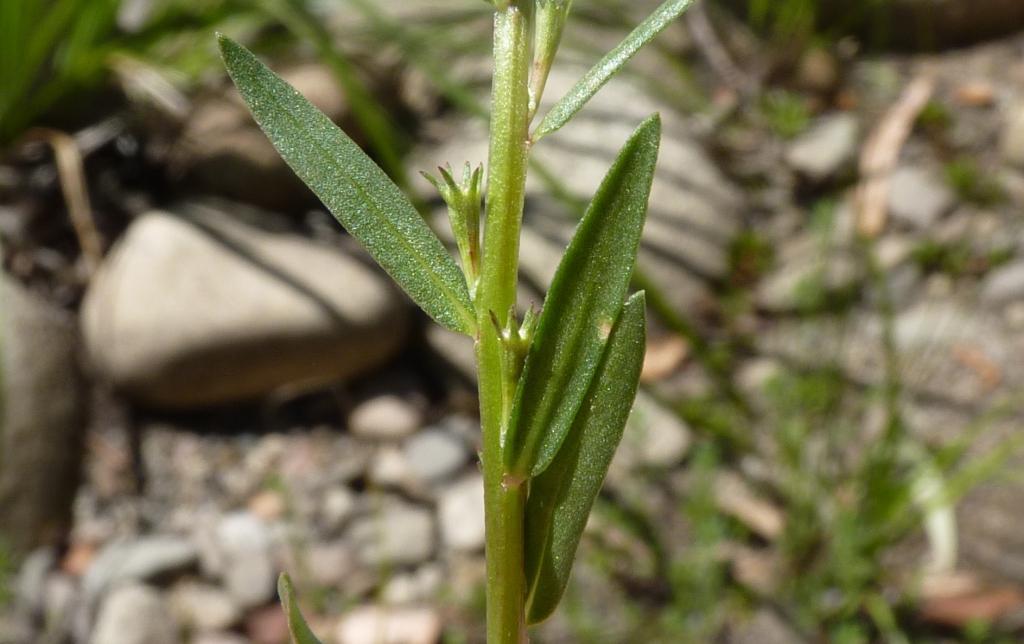Lythraceae
Annual or perennial herbs, less often shrubs or trees. Leaves opposite or whorled, rarely alternate, simple, usually entire; stipules minute or absent. Inflorescence a racemose spike, cymose panicle or a solitary, axillary flower. Flowers actinomorphic or rarely zygomorphic, bisexual, perigynous, sometimes heterostylous; hypanthium prominent, sometimes spurred; tooth-like appendages sometimes present between sepals; sepals usually 4–6, valvate, inserted on a floral tube; petals usually 4–6, free, crumpled in bud, rarely absent; stamens usually in 2 whorls and twice the number of petals, sometimes in 1 whorl and equal in number to, or fewer than the petals; anthers versatile or basifixed, longitudinally dehiscent; ovary superior, 2–6-celled; stigma often capitate. Fruit usually a capsule, dehiscing by various means; seeds usually numerous, with little or no endosperm.
31 genera with about 650 species, widespread throughout tropical regions of the world, less common in temperate regions; 8 genera and c. 24 species in Australia.
Jeanes, J.A. (1996). Lythraceae. In: Walsh, N.G.; Entwisle, T.J., Flora of Victoria Vol. 3, Dicotyledons Winteraceae to Myrtaceae, pp. 909–911. Inkata Press, Melbourne.
 Spinning
Spinning


